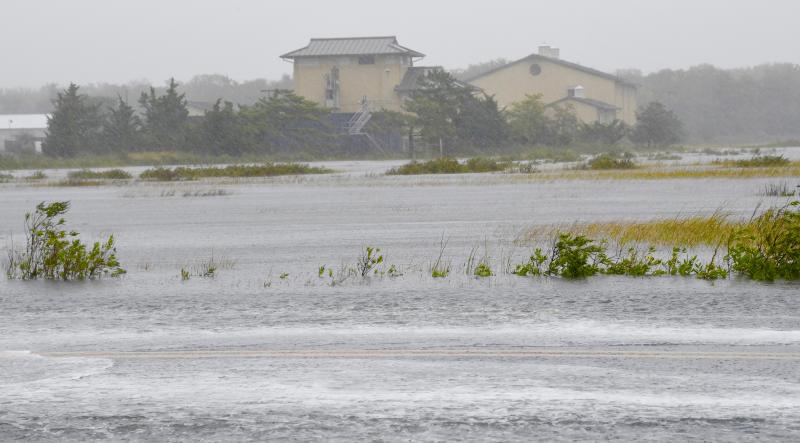Forecasters are predicting the Atlantic hurricane season that begins Saturday, June 1, could be very active. Gov. John Carney proclaimed May 27-31 as Hurricane Awareness Week, and the Delaware Emergency Management Agency urges everyone to visit PrepareDE.org to find resources on how to make a plan, build a kit, and stay informed. Residents and visitors can also use the Know Your Zone tool to locate their evacuation zone, which can help inform when and how to evacuate in an emergency.
“It only takes one storm to have a major impact on Delaware. Preparing now is the best way to protect your family, home or business,” said A.J. Schall, Delaware Emergency Management Agency director. “We continue coordinating with the National Weather Service, and our state, county and local partners to prepare for the upcoming hurricane season. There are simple things everyone can do – building an emergency kit, getting an insurance checkup, monitoring weather forecasts and following guidance from public officials – that can go a long way toward ensuring Delaware is ready for any potential event.”
With extreme weather becoming more frequent and intense, it is critical for families and businesses to be informed and prepared. The official preseason outlook from the National Oceanic and Atmospheric Administration is forecasting an 85% chance of an above-normal season, with 17 to 25 named storms and four to seven major hurricanes due to an unprecedented ocean heat wave and a potential La Niña climate pattern. The previous La Niña in 2020 was a record-breaking year with 30 tropical storms and 14 hurricanes, topping a previous high of 27 storms in 2005, also a La Niña year that included the devastating Hurricane Katrina.
Regardless of the seasonal forecast, it only takes one storm to make a serious, life-changing impact. As a low-lying coastal state, Delaware is vulnerable to tropical storms and hurricane hazards, including coastal and inland flooding, high winds, rip currents, storm surges and tornadoes. Flooding from Hurricane Ida in 2021 and tornadoes from Tropical Storm Isaias in 2020 show that severe effects often occur many miles from a storm's path. Overall, water poses the biggest risk for loss of life: Storm surge is the leading cause of all hurricane-related fatalities, followed by inland flooding due to excessive rainfall.
Hurricanes are the most intense type of tropical cyclone, a rotating weather system that forms over tropical or subtropical waters. In the Northern Hemisphere, cyclones rotate counterclockwise and are classified by maximum winds. Tropical depressions have winds up to 38 mph, tropical storms from 39 to 73 mph, and hurricanes 74 mph or higher. A major hurricane has at least 111 mph winds, corresponding to a Category 3, 4 or 5 on the Saffir-Simpson Wind Scale.
Make a plan
It’s important to plan ahead – what to do if a hurricane is coming, how to contact family, and be informed about local government and agency emergency plans. For more information, go to preparede.org/make-a-plan.
Assess the risks. Find details about evacuation zones at Know Your Zone or learn about flood risk with the Flood Planning Tool. Tornadoes, excessive rainfall, and life-threatening floods can occur hundreds of miles inland.
Declutter drains and gutters, and inspect trees. Consider trimming trees and dead limbs.
Protect both family and home with flood insurance. Most homeowner policies do not cover flooding. A policy can take up to 30 days to go into effect. Learn more at floodsmart.gov.
Account for seniors and those with special needs with the Department of Health and Social Services’ Office of Preparedness and its Preparedness Buddy program. The University of Delaware has resources at allreadyde.org.
To help keep pets and other animals safe, get resources at the Office of Animal Welfare and Delaware Animal Response Program.
Once you have a plan, review it to ensure everyone knows what to do. Include children in your plan and help them practice it. Read Prepare with Pedro at ready.gov/kids/prepare-pedro.
Build a kit
Having an emergency kit ready to go can be a life-saver. Go to preparede.org/build-a-kit for useful information.
Gather supplies for at least one week for every family member: nonperishable food, water, medications, and infant formula and diapers for small children. Include a first-aid kit, flashlights, radios, matches in a waterproof container, and spare batteries.
Stockpile pet supplies, including crates, extra food and water, and other items pets may need.
Keep a small amount of cash on hand in case ATMs are not working.
Review insurance coverage, and document property with photographs in case of an insurance claim.Keep documents in a safe place or make secure digital copies. Use a waterproof container for copies.
Have a cellphone power bank or portable car charger, and try to charge phones beforehand. Make sure your vehicle's gasoline tanks are filled and replenish propane tanks for outdoor grills.
Consider a generator or other backup. Only use a generator outdoors and away from windows.
Check on neighbors to ensure they are safe and prepared, and have the necessary supplies.
Stay informed
Sign up for emergency alerts through the Delaware Emergency Notification System at preparede.org/stay-informed. If an evacuation notice is issued, it will be sent by text, call, email and social media.
Download the FEMA app to receive National Weather Service alerts for up to three locations.
Tune in to local TV or radio to learn about storms and potential evacuations for your specific zone.














.jpg)








































